Securely Migrate Data Labeling Tasks From CVAT To Labellerr

CVAT stands for Computer Vision Annotation Tool. It is an open-source tool that is designed for annotating images and videos to create datasets for computer vision algorithms. CVAT provides users with a web-based interface that allows easy annotation of objects within images and videos.
Features of CVAT:
Data Annotation: CVAT tools allow users to annotate different types of objects, like images and videos, such as bounding boxes and polygons. We can also perform semantic segmentation masks.
Collaborative Annotation: Multiple users can easily collaborate on the same projects, which allows for a distributed and teamwork-based annotation structure.
Easy Integration: CVAT supports many popular machine learning frameworks and libraries that allow seamless integration of annotated datasets into training pipelines.
In this blog, we will use CVAT to make simple object detection annotations on images. We are going to use a wheat leaf disease dataset from the Kaggle website. The dataset contains two diseases: septoria and stripe rust. We will annotate the dataset with two labels.
Table of Contents
- Image Annotation Using CVAT
- Migration
- Challenges of Migration
- Why Migrate from CVAT to Labellerr?
- Frequently Asked Questions
Image Annotation using CVAT
1) Sign up at https://app.cvat.ai/auth/login with your email and password.
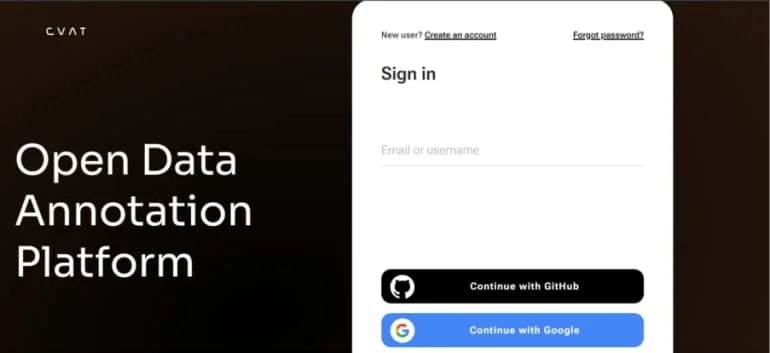
2) Create a new task by clicking on the + sign and selecting Create a new task to create a new project.
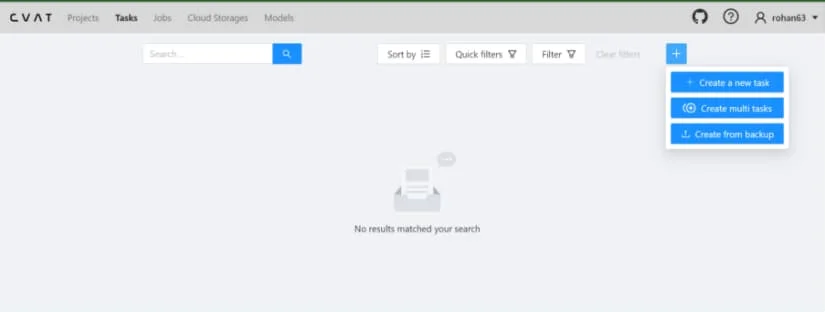
3) Fill in the details, like the project name and labels, and upload the dataset. In this tutorial, we have created two labels: Septoria and Stripe-Rust. Click on Jobs at the bottom of the screen to get started with annotation.
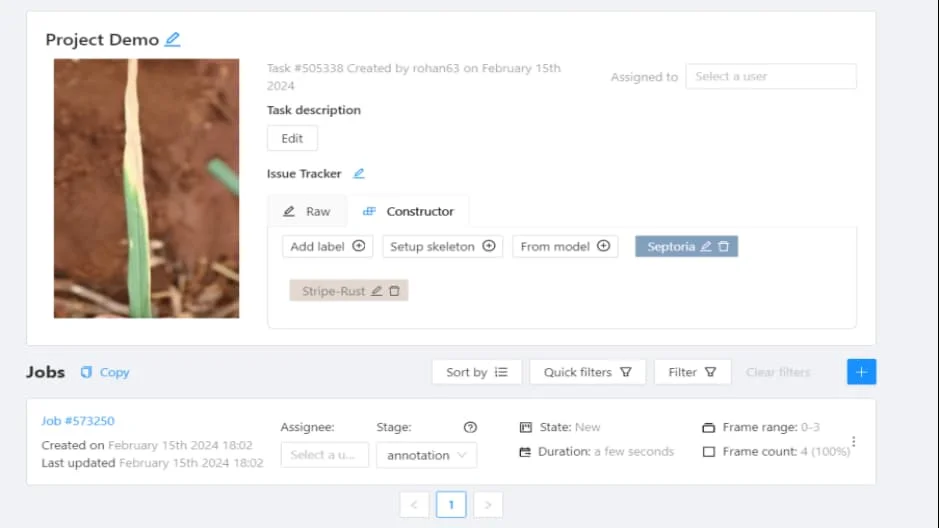
4) Click on the rectangle panel on the left side to draw a rectangle-bounding box. Now draw a bounding box around the infected area.
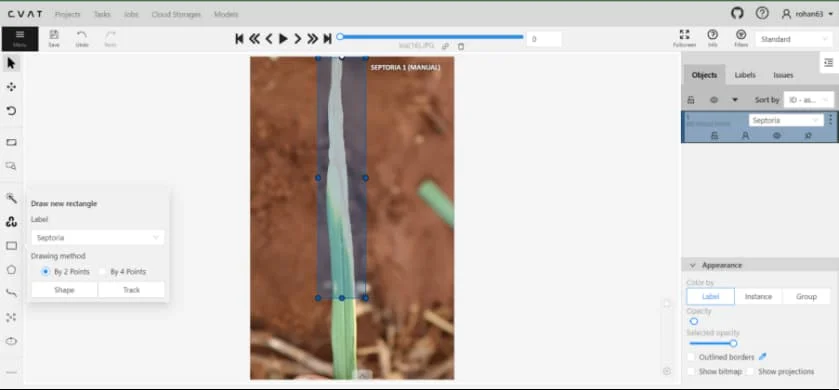
5) After all the images have been annotated, click on the save button on the top left. Then click on tasks in the top navigation bar.

6) Next, we will download all the annotations from CVAT. Click on Actions and Export Task Dataset, then select the required export format and download the annotations.
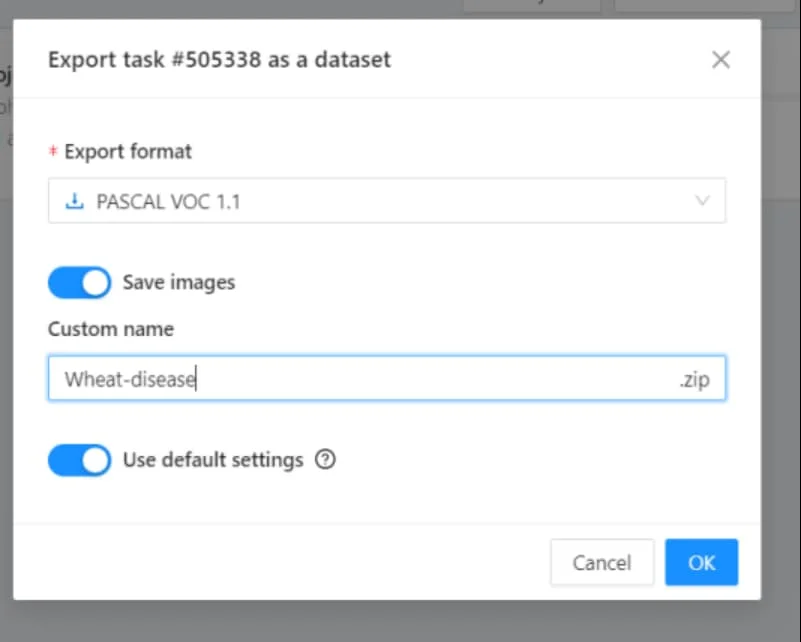
Congratulations! You have successfully annotated the dataset using the CVAT tool.
Migration
Migration from one platform to another means exporting data from the current platform, converting it to a compatible format, and importing it onto the new platform while preserving data and functionalities without any loss of data.
It consists of a series of steps, including evaluating the features and benefits of the new platform, planning the transition process, and ensuring data integrity. It may also require users to reconfigure some tasks, set up user accounts and permissions, and adjust workflows.
The goal of migration is to leverage improved performance enhancements, scalability options, and an overall better user experience offered by the new platform.
Challenges of Migration
Migration from one annotation platform to another can present several challenges:
- Data Format: Many platforms often use their own formats to store annotated data. Migrating data from one platform to another may require converting annotations from the original format to a format compatible with the new platform.
- Annotation Consistency: Different annotation platforms have different annotation tools like rectangles , polygons, etc. Maintaining consistency in annotations during migration is important to maintain the quality and accuracy of the dataset.
- User Training and Familiarization: Migrating to a new annotation platform requires users to learn tools, interfaces, and workflows.
- Customization and configuration: Annotation platforms provide users with different customization options, like defining annotation tasks, labeling interfaces, and project workflows. Migrating these custom configurations to new platforms requires a lot of effort.
How does Labellerr overcome these challenges?
1) Labellerr supports importing data from various formats commonly used in annotation tasks, like JSON and CSV. It also supports various data types like image, text, audio, etc.
2) Labellerr provides a wide range of annotation tools ,including polygons, keypoints and more ensuring consistency in annotations regardless of the original format.
3) Labellerr prioritizes user-friendly interfaces and has intuitive workflows to minimize the learning curve for new users. It also provides customer support to facilitate user training and familiarization with the platform.
4)Labellerr offers customization options which allows user to define annotation tasks, create custom labeling interfaces, and configure project workflows according to their specific need.
Labellerr's comprehensive feature set, data format compatibility, annotation consistency, user-friendly interface, and customization capabilities allow it to overcome the challenges related to migrating annotation data and workflows from other platforms.
Why migrate from CVAT to Labellerr?
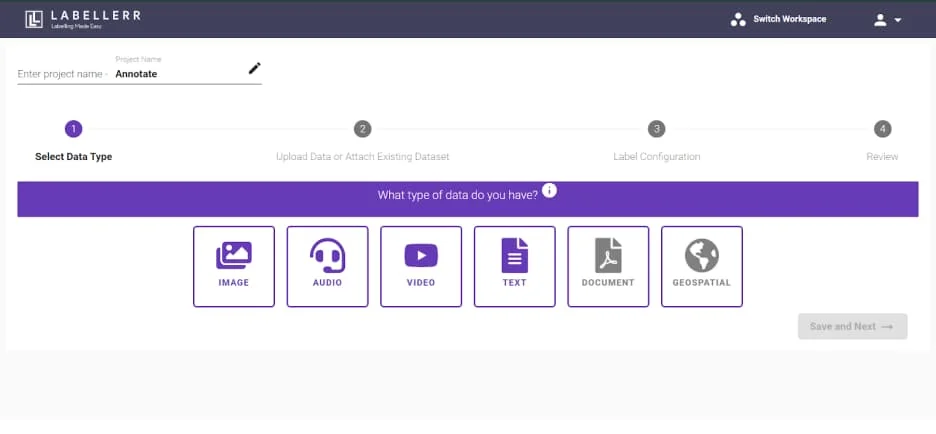
There could be several reasons why someone might consider migrating their existing annotating projects from Label Studio to Labellerr, including feature enhancements, ease of use, performance improvements, and the overall user experience.
The old platform may no longer meet the team's growing needs, lacking essential features. There may also be frequent bugs, crashes, or security issues that could disrupt your workflow and compromise data integrity. Inadequate customer service or a declining user community could leave you struggling with issues.
Labellerr has some of the most advanced features that many other tools lack, making it a better choice for annotating datasets. Following are some of the features of Labellerr:
1) Smart Feedback Loop: Labellerr’s smart feedback loop can help identify and improve inaccurate annotations, leading to higher data quality. CVAT lacks a feedback loop, which is necessary for complex projects.
2) Customizable workflows: Labellerr offers more flexibility in creating custom workflows for specific labeling tasks. This is required for projects with unique requirements or non-standard formats.
3) Easy Expansion: One critical advantage of Labellerr is its ability to add new classes to existing annotations. This flexibility comes in handy when your project’s scope expands, requiring additional labeling of objects or categories within your data.
4) Interactive Dashboard: Labellerr provides an interactive dashboard that shows information like daily stats, organization information, and the number of annotations.
Here’s how you can easily migrate from CVAT to Labellerr.
- Go to https://login.labellerr.com/ and create an account and a workspace of your own.
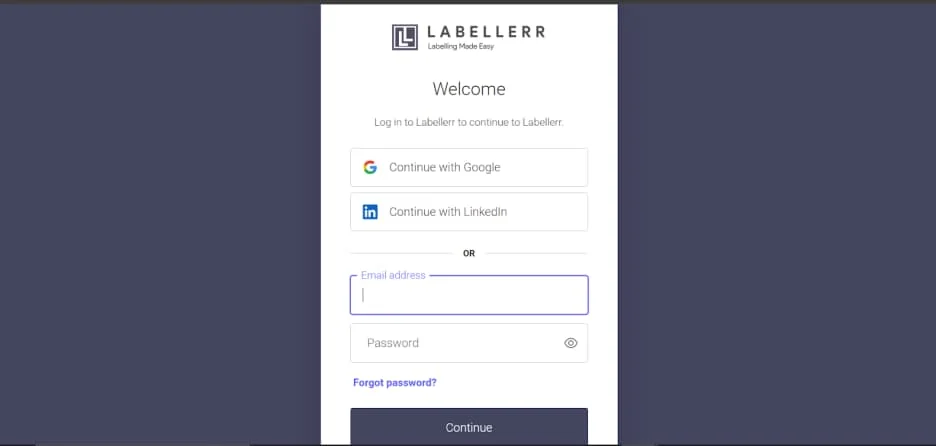
2. Enter a project name and select the type of data you want to annotate. In this tutorial, we will be using image data, and then click save and next.
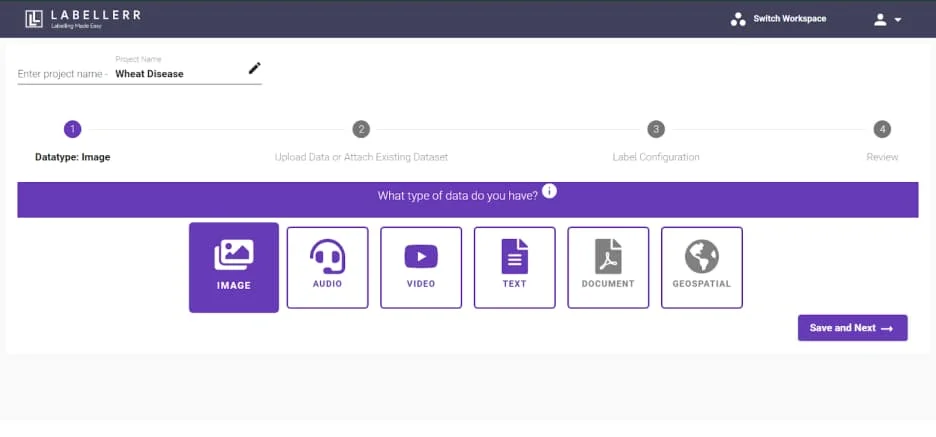
3. Choose how you want to upload your previous annotations. Here, we will be using AWS S3 to upload our previous annotations. Enter your previously configured AWS details and click connect.
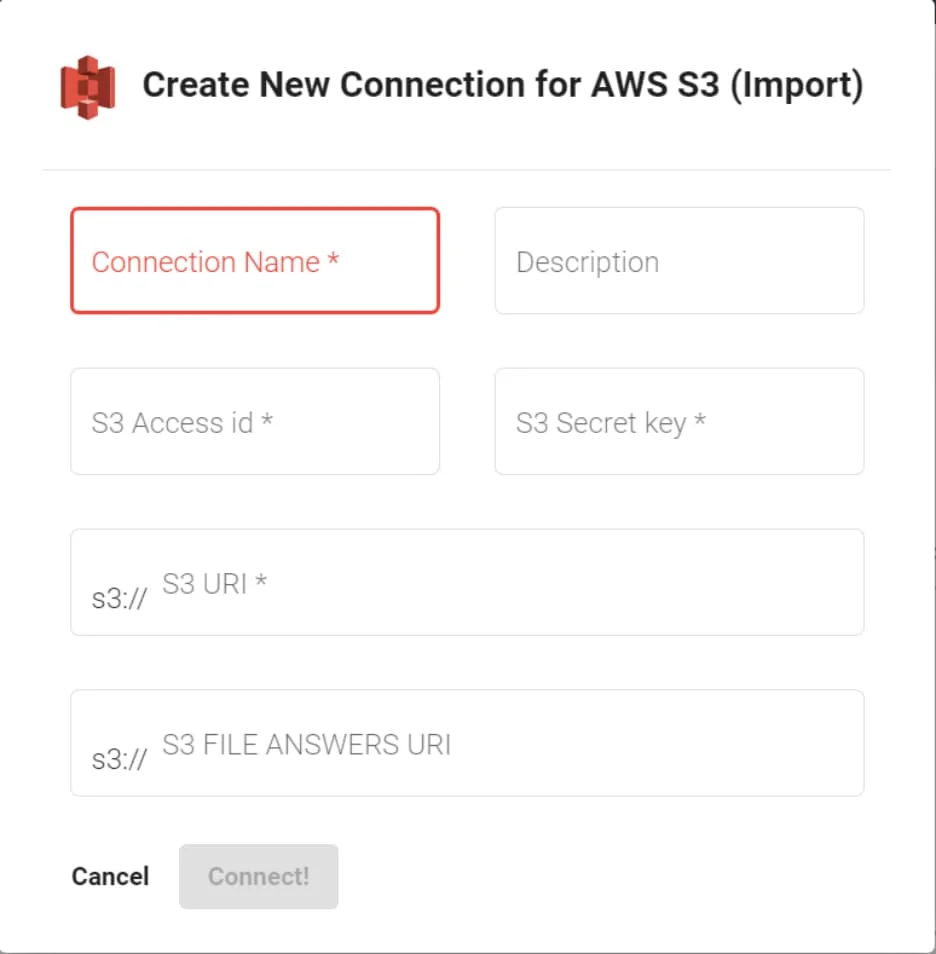
4. Add labels to your existing annotations or make any changes you want to your previous annotations, and click on Create Project.
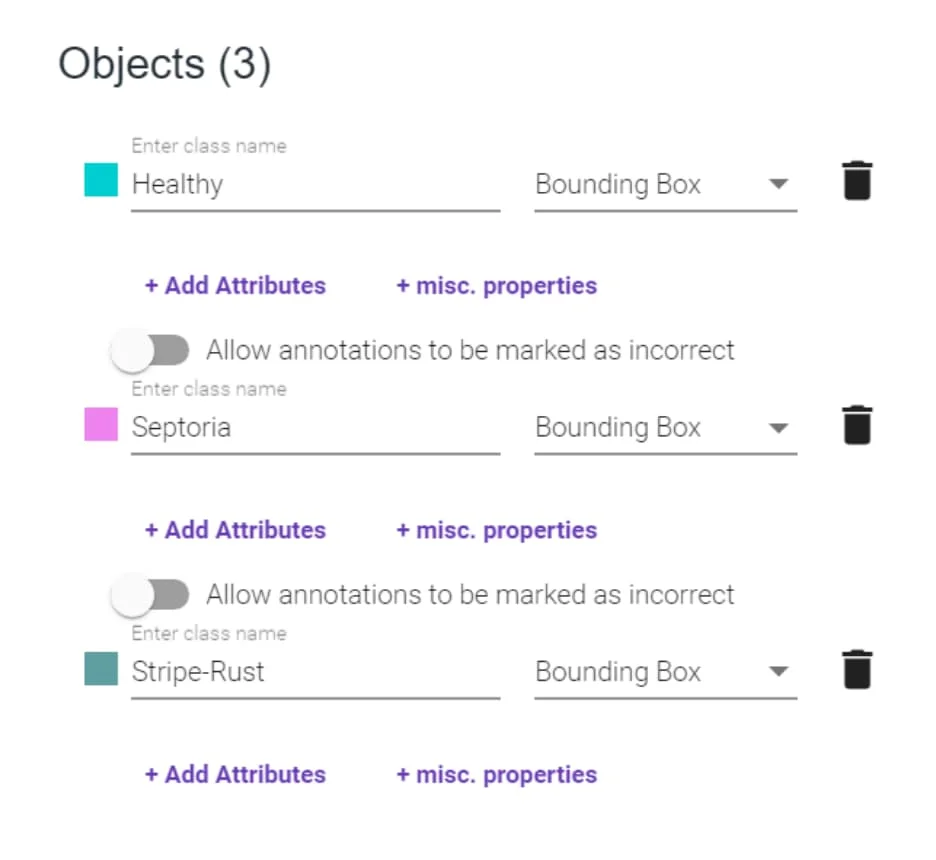
5. Now you can successfully annotate your dataset with the required changes.
Frequently Asked Questions
Q1) What is migration, and why is it necessary?
Migration refers to the process of moving data from one platform to another. This can involve transferring data, applications, and configurations from the existing system to the new one. It is necessary for many reasons, like scalability and performance, or to adapt to changing business requirements.
Q2) What is CVAT used for?
CVAT, or Computer Vision Annotation Tool, is used for annotating images and videos to create datasets for training machine learning models in computer vision tasks. It supports various annotation types like bounding boxes, polygons, and keypoints.
Q3) What are the potential benefits of migrating to a new annotation platform like Labellerr?
Labellerr provides many advanced features, like improved scalability and performance, better integration with existing workflows and tools, and an enhanced user experience.

Simplify Your Data Annotation Workflow With Proven Strategies
.png)


